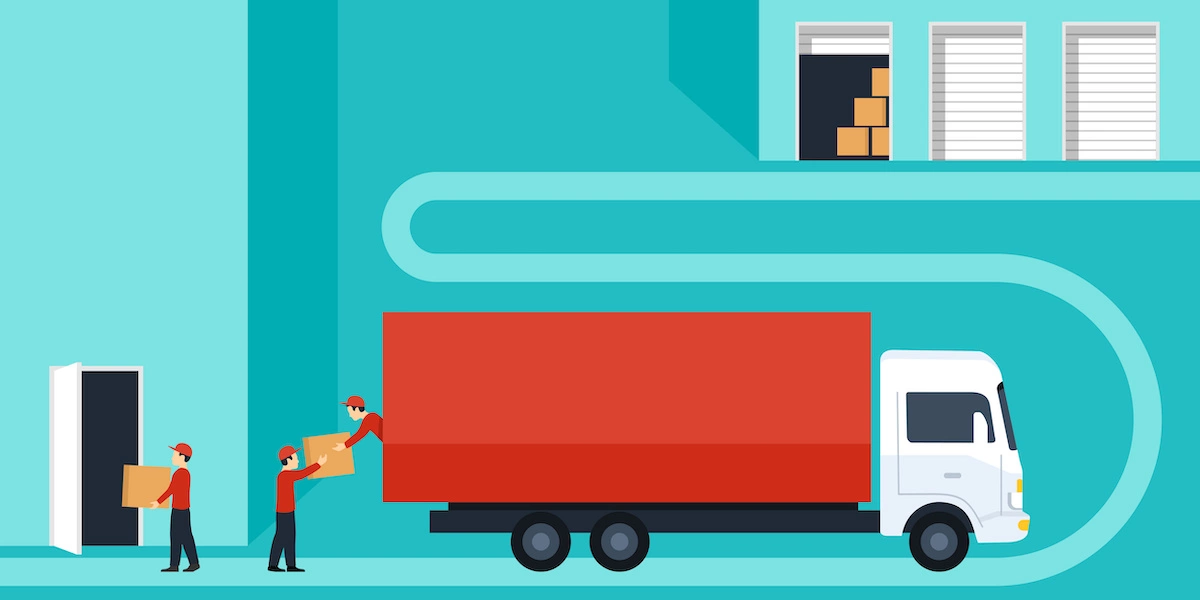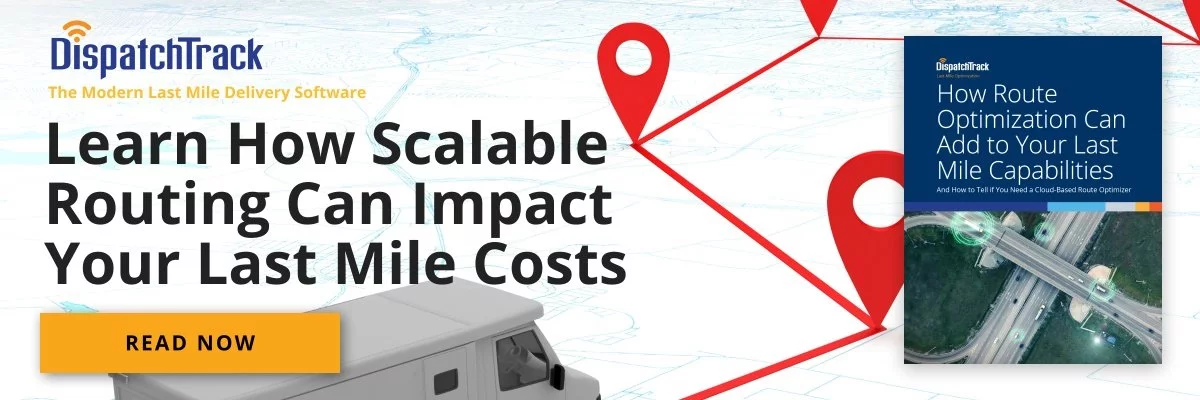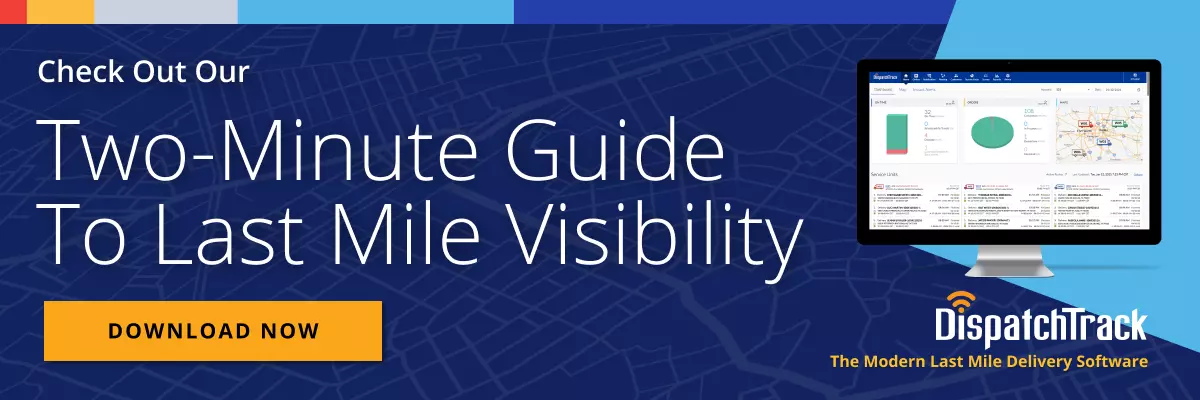For many enterprises, the speed and efficiency with which their products are delivered to customers play a crucial role in their success. Deliveries, however, can be quite challenging—especially for businesses that are dealing with high volume orders and shipping to multiple locations.
Unfortunately, consumers aren’t interested in the nuance or complexity of getting goods to their final location. Delivery is composed of various phases—from getting the goods to shipping them to a distribution center to delivering to the customer’s door—but your average buyer only cares about the final leg.
In order to make informed decisions around cost optimization and other elements of the supply chain, it is crucial to understand the factors influencing each of the delivery phases. To help make that possible, we’ll spend this article breaking down how last mile delivery works and how various factors impact delivery costs.
Understanding Last Mile Delivery
Last mile delivery is the last leg of the delivery process—it encompasses any aspect of the delivery process that occurs after products have been transported to distribution centers and are ready to be shipped to end customers. The last mile is complex, and often challenging for those who don’t have the right tools and processes in place.
Last mile delivery is also one of the most costly aspects of shipping, due in large part to the high fuel and labor requirements of delivering door-to-door. In rural areas where there are fewer deliveries, drivers will need to traverse long distances in between delivery drop-off points. This means long hours for drivers and higher consumption of fuel.
You might think that delivering to urban areas will be less costly. Unfortunately, traffic slowdowns and vehicle congestion will negate any benefits of having delivery points near each other.
The rise of e-commerce platforms into the market has also increased delivery volumes exponentially. This increase is resulting in even more complex and costly last mile delivery logistics.
Factors Affecting Last Mile Delivery Costs
Especially with fuel prices rising, the last mile can be a major profitability risk. Those that fail to lower their logistics costs risk a significant drop in profits, to say nothing of growing dissatisfaction among customers.
To better understand how to optimize last mile delivery costs, you first need to understand something more fundamental: how much does last mile delivery cost to begin with, and what are the factors that are driving those costs up?
Late and missed deliveries
First things first: shoppers who are not provided with accurate expected time of arrivals (ETAs) are more likely to be out of their homes to receive the packages when the driver arrives, resulting in missed deliveries. Failed or missed deliveries are critical points to address. Why? Because you have to incur the cost of returning the undelivered items to the distribution center, attempting delivery again a later day, and potentially losing out on the repeat business of the customer.
Demand for same-day shipping
Customers’ expectations have changed over the last few years. Not only do shoppers demand fast and accurate shipping, they also expect on-demand shipping options. It’s hard for many businesses to fulfill customers’ expectations of fast shipping at low prices without risking cost effectiveness—but it often feels like the only way to stay competitive in the marketplace.
Manual route planning
Manual route planning not only is time-consuming but inefficient. Planners may spend many hours finding the workable routes without actually finding the most cost-effective ones. This is because human planners do not have the same computing powers as an optimized route planning app. Even the most seasoned planners still cannot account for every variable affecting delivery time windows.
Companies that are still using conventional methods for route planning are providing their customers with inaccurate delivery time windows. They’re also virtually ensuring that their drivers complete fewer stops per day before you factor in missed and failed deliveries—all while spending more on fuel for the privilege of hitting stops in an inefficient sequence.
Lack of visibility
Lack of visibility on drivers’ locations and statuses is also causing last mile costs to go up. Dispatchers and fleet managers who are blind on which drivers are idling unnecessarily or going off routes are also unable to address delivery exceptions and other inefficiencies that might crop up on the day of delivery. When you don’t have insight into your operations, it’s almost impossible to weed out inefficiencies over time or avoid disruptions in the last mile.
How Much Does Last Mile Delivery Cost?
Inefficiencies and customers’ demand for fast and free shipping are factors affecting last mile delivery costs. But just how expensive is the final mile, exactly?
Last mile delivery costs account for more than 40 percent of overall supply chain costs and more than 50 percent of total shipping costs. This means many businesses are spending half of their supply chain and shipping costs on the final mile.
As a result, it shouldn’t be shocking that some research has found that those that fail to optimize last mile deliveries could potentially lose out on more than a quarter of their percent of their profits over the next three years.
How a Last Mile Solution Helps
Enterprises can reduce final mile shipping costs by investing in an advanced last mile solution. This should be a feature-rich tool that’s capable of transforming last mile operations holistically. The right solution should offer a handful of major functions to help businesses optimize their last mile delivery operation:
Route optimization
Route optimization capabilities help you find the most cost-effective routes by taking into consideration various factors, from vehicle capacity and location to traffic and weather conditions. This enables fleets to reduce fuel costs and increase the number of stops completed on each route. Ideally, your truck routing software would also generate accurate ETAs, which could then be communicated to customers proactively in order to decrease failed deliveries.
Real-time visibility
The right technology will also offer you transparency over your fleets, allowing you to provide customers with real-time status updates and spot exceptions at a glance. This way, customers can be updated on when their orders will be delivered, and dispatchers who see potential late deliveries or other disruptions arising can actually do something about it.
Deep insights
The right solution also offers deep insights, allowing executives and managers to make data-driven decisions. This might include automatic delivery costing, custom reporting, and AI-powered learning about traffic and other factors over time.
Last mile delivery may be complex—but it doesn’t have to be prohibitively expensive. Addressing inefficiencies in the final mile to cut down costs is possible, as long as you have the right last mile solution.

